Evolution rather than revolution for new Euro5 compliant hypersports machine.
Suzuki’s Hayabusa is definitely the bike which gets the most imaginative stories written about it. Every time the legendary hypersports machine is due an upgrade, magazine journalists and online fans drool over the prospect of a six-cylinder motor, exotic chassis changes or a massive turbo install.
The fact it’s not subject to race rules like a litre superbike, plus its history as a high-horsepower top speed monster means we have carte blanche to go all creative and produce wild wish lists of mega power motors and crazed chassis engineering.
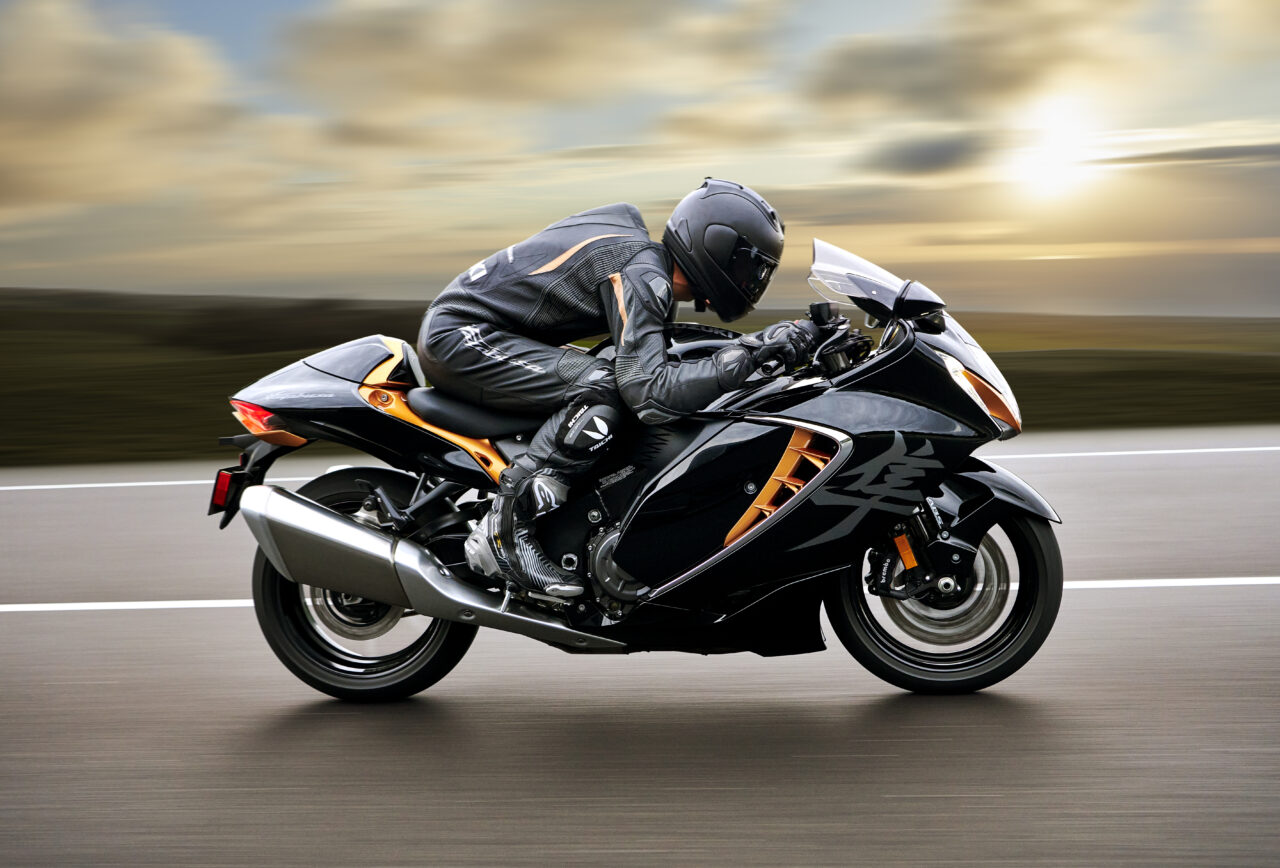
Or
0345 872 3614
That was true for the new 2021 Hayabusa too – the old model was cancelled by Euro5 emissions rules and it’s been out of production for a while. So rumours from Japanese journos and other ‘insiders’ spoke of a massive change to the Hayabusa for this year.
But now it’s here – and while we don’t get turbos or six-cylinder engines, we do get a whole new look, massive upgrades to the electronics, and a heap of changes all through the engine and chassis.
The engine
Starting with the engine, Suzuki itself says it experimented with inline-six motors and turbochargers. But the engineers decided that the existing 1,340cc inline-four gave the best balance of power, torque and packaging (and also kept the accountants happy, we imagine).
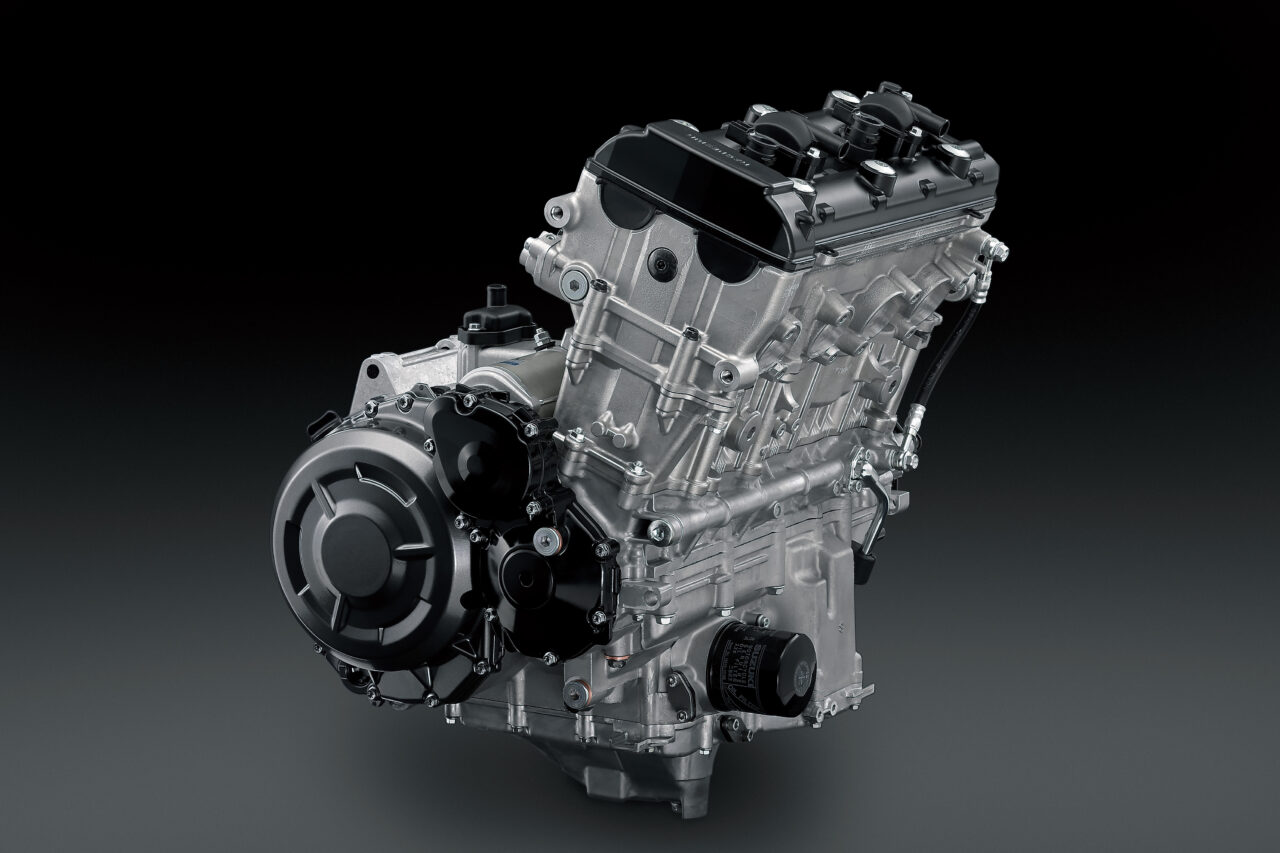
So the bore, stroke, capacity and compression ratio all stay the same as before, but peak power is down a little to a claimed 187bhp from 194bhp. The peak torque is also down – but Suzuki claims the low- and mid-range performance is stronger, and gives faster acceleration than before off the line.
Euro5 compliance is a tough job, and Suzuki had to change a heap of parts inside the engine, including a new combustion chamber design, new pistons, camshafts and valve springs. The gudgeon pins, con-rods, crankshaft, crankcases and transmission parts are also updated for more strength and better durability, while various gearchange components are altered to suit the new up/down quickshifter.
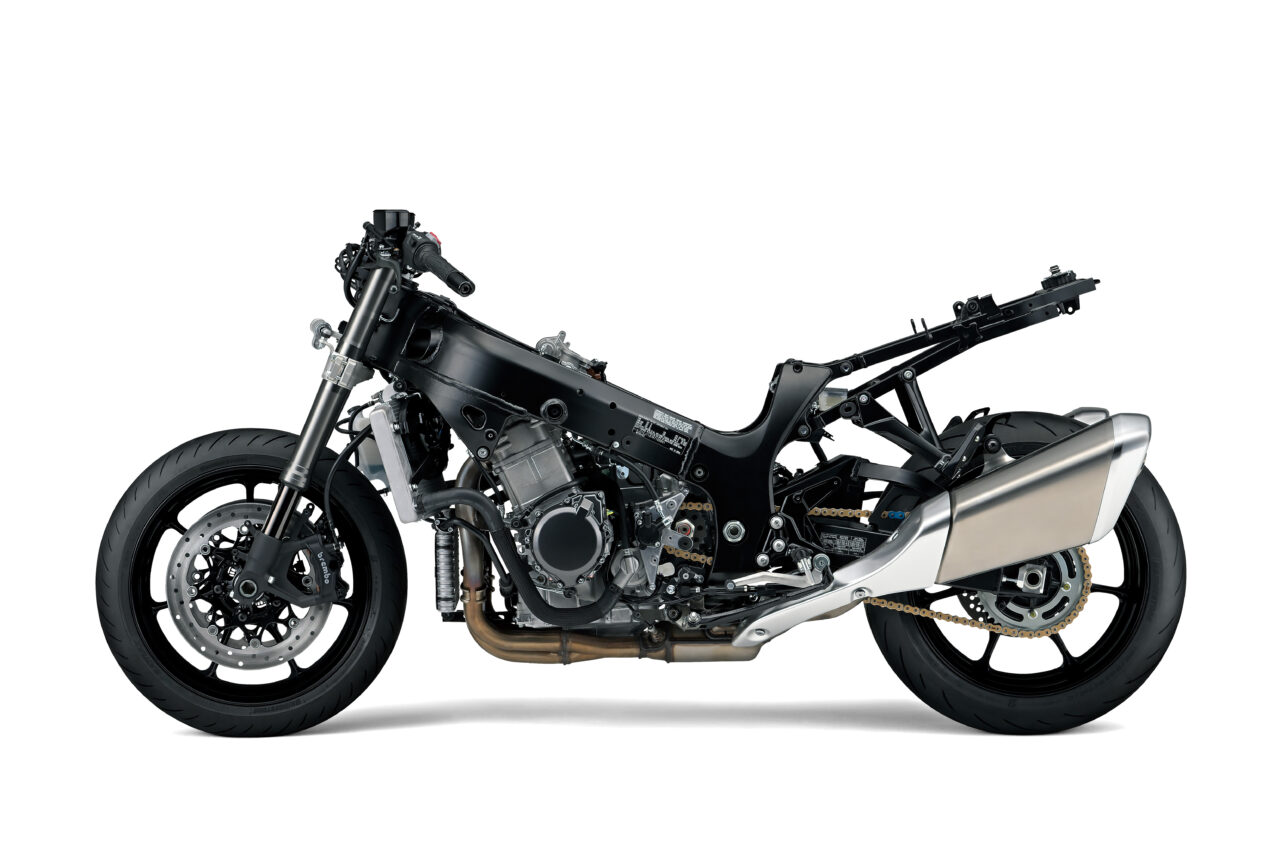
Most obvious is a new four-into-two exhaust system, which includes new catalysts for the Euro5 rules, a revised link pipe between cylinders one and four, and a lighter construction to save more than 2kg of weight.
Chassis changes
On the chassis front, sticking with the same basic engine layout means the frame remains the same twin-spar extruded/cast aluminium design too, but there’s a new subframe. The suspension is mostly as you were too, but there’s detail changes to the internal components for better stability at speed.
Brakes are new, with larger 320mm discs and Brembo Stylema four-piston radial mount calipers, and a new high-end ABS system incoporated into the electronics package. Wheels are new seven spoke parts, and the ‘Busa now comes with Bridgestone’s S22 supersport rubber. Overall mass is pretty much as you were – 264kg claimed wet weight.
Electronic updates
The electronics package is definitely the biggest change to the Hayabusa though. Suzuki’s brought it right up to date with a comprehensive package of rider safety aids and comfort upgrades, based round an IMU inertial measurement unit and new ride-by-wire throttle system. There’s also a new LCD dashboard with a large central TFT panel plus dual analogue tacho and speedo dials, for easier access to the various settings.
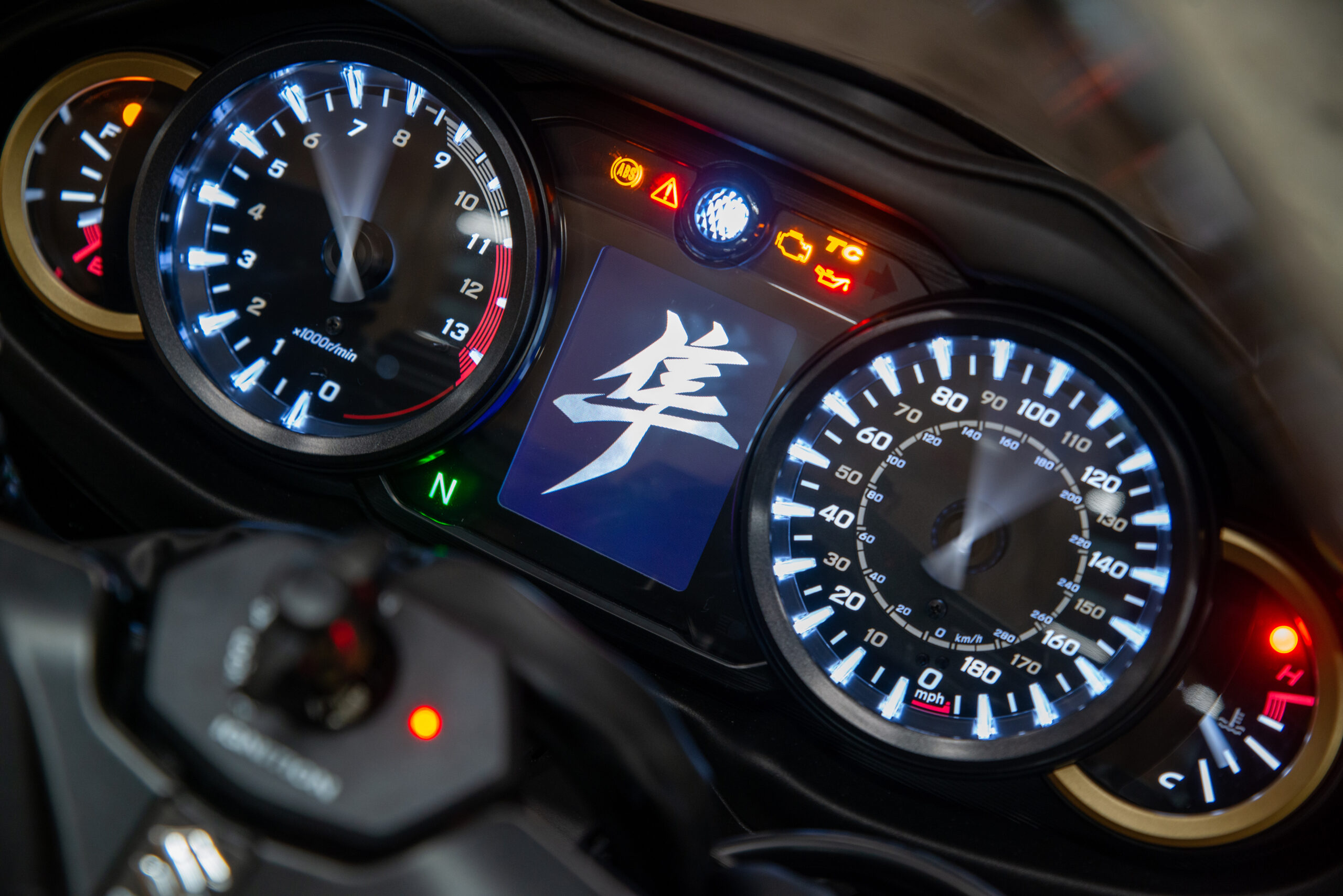
The new Suzuki Intelligent Ride System includes smart traction control, rider power modes, a launch control system with three settings (4,000rpm, 6,000rpm or 8,000rpm), wheelie control, engine brake control and up/down quickshifter control. You also get cruise control, active speed limiter, combined brake system, and a hill-start brake setup. There are three preset modes for all the settings, plus three user-customisable modes, so you can easily tweak the rider aids to suit your needs and the conditions.
Bodywork
Finally, the bodywork is all new, with heavily revised aerodynamics, improved comfort and more aggressive styling. There’s a new LED lighting package with stacked front headlight and rear combination light, new more aerodynamic mirrors, two-tone air vents on the side panels and revised ram-air intakes.
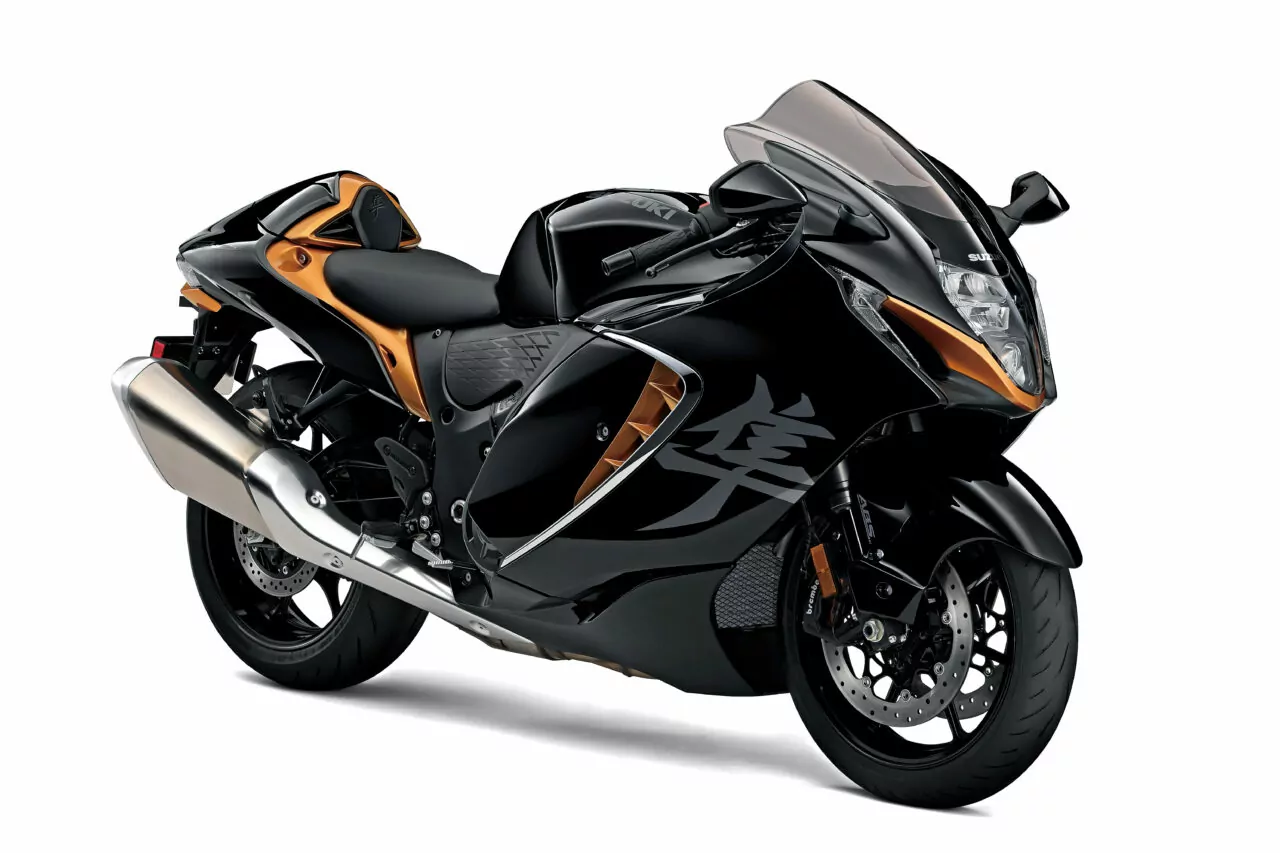
So – a fairly fundamental, impressive revamp for Suzuki’s big beast, if not the massive change some might have dreamed of. And the price is pretty decent too – £16,499 is cheap in a world of £24k litre superbikes – and the new Hayabusa will be in the shops next month, March 2021.
SPECS
Engine: DOHC 16v, inline-four, l/c, 1,340cc
Bore x stroke: 81x65mm
Compression ratio: 12.5:1
Carburation: EFI, 43mm ride-by-wire throttle bodies
Max power (claimed): 187hp@9,700rpm
Max torque (claimed): 111ft lb@7,000rpm
Transmission: six speed gearbox, wet slipper clutch, chain drive
Frame: aluminium twin spar
Front suspension: 43mm KYB USD fork, fully adjustable
Rear suspension: aluminium braced swingarm, KYB monoshock with full adjustability
Brakes: twin 320mm discs, four-piston Brembo Stylema monobloc radial calipers (front), single disc, single-piston caliper (rear), cornering ABS.
Wheels/tyres: cast aluminium/Bridgestone S22, 120/70 17 front, 190/50 17 rear
Rake/trail: 23°/90mm
Wheelbase: 1,480mm
Kerb weight: 264kg
Fuel capacity: 20 litres
Equipment: LED lighting, cruise control, up/down quickshifter, IMU-assisted cornering ABS and traction control, colour LCD dash, rider power modes
Don’t forget to get your motorcycle insurance quote from Devitt today!